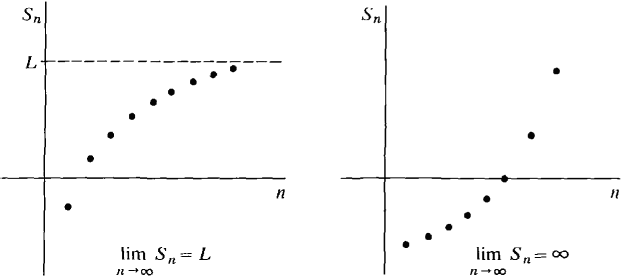| The ebook Elementary Calculus is based on material originally written by H.J. Keisler. For more information please read the copyright pages. |

|

Home  Infinite Series Infinite Series  Series With Positive Terms Series With Positive Terms  Positive Term Series - Theorem 1 Positive Term Series - Theorem 1 |
|||||






|
|||||
Positive Term Series - Theorem 1
9.4 SERIES WITH POSITIVE TERMS By a positive term series, we mean a series in which every term is greater than zero. For example, the geometric series 1 + c + c2 + ... + cn + ... is a positive term series if c > 0 but not if c ≤ 0. We call a sequence S1, S2, ..., Sn, ... increasing if Sm < Sn whenever m < n. It is easy to see that at + a2 + ... + an + ... is a positive term series if and only if its partial sum sequence is increasing. We are going to give several tests for the convergence of a positive term series. The starting point is the following theorem. THEOREM 1 An increasing sequence <Sn> either converges or diverges to ∞. Geometrically, this says that, as n gets large, the graph of the sequence either levels out at a limit L or the value of Sn gets large (Figure 9.4.1). We omit the proof. (The proof is given in the Epilogue at the end of the book.)
Figure 9.4.1 Theorem 1 has an equivalent form for positive term series because the partial sum sequence of a positive term series is increasing. THEOREM 1 (Second Form) A positive term series either converges or diverges to ∞.
Remark: Theorem 1 shows that to determine whether a positive term series converges, we need only look at one infinite partial sum. If it is finite the series converges and if it is infinite the series diverges to ∞.
|
|||||
Home  Infinite Series Infinite Series  Series With Positive Terms Series With Positive Terms  Positive Term Series - Theorem 1 Positive Term Series - Theorem 1 |
|||||
Last Update: 2006-11-07



